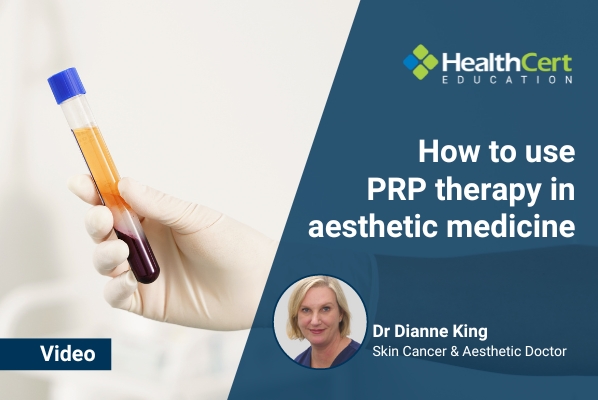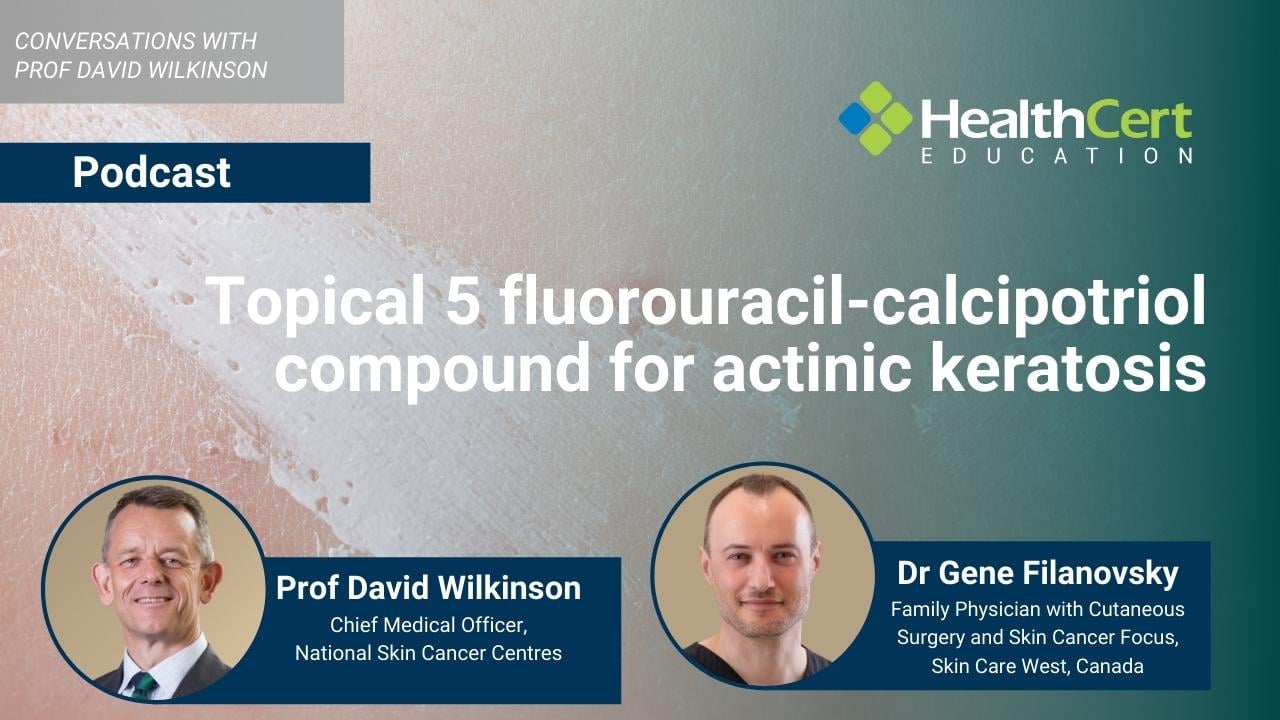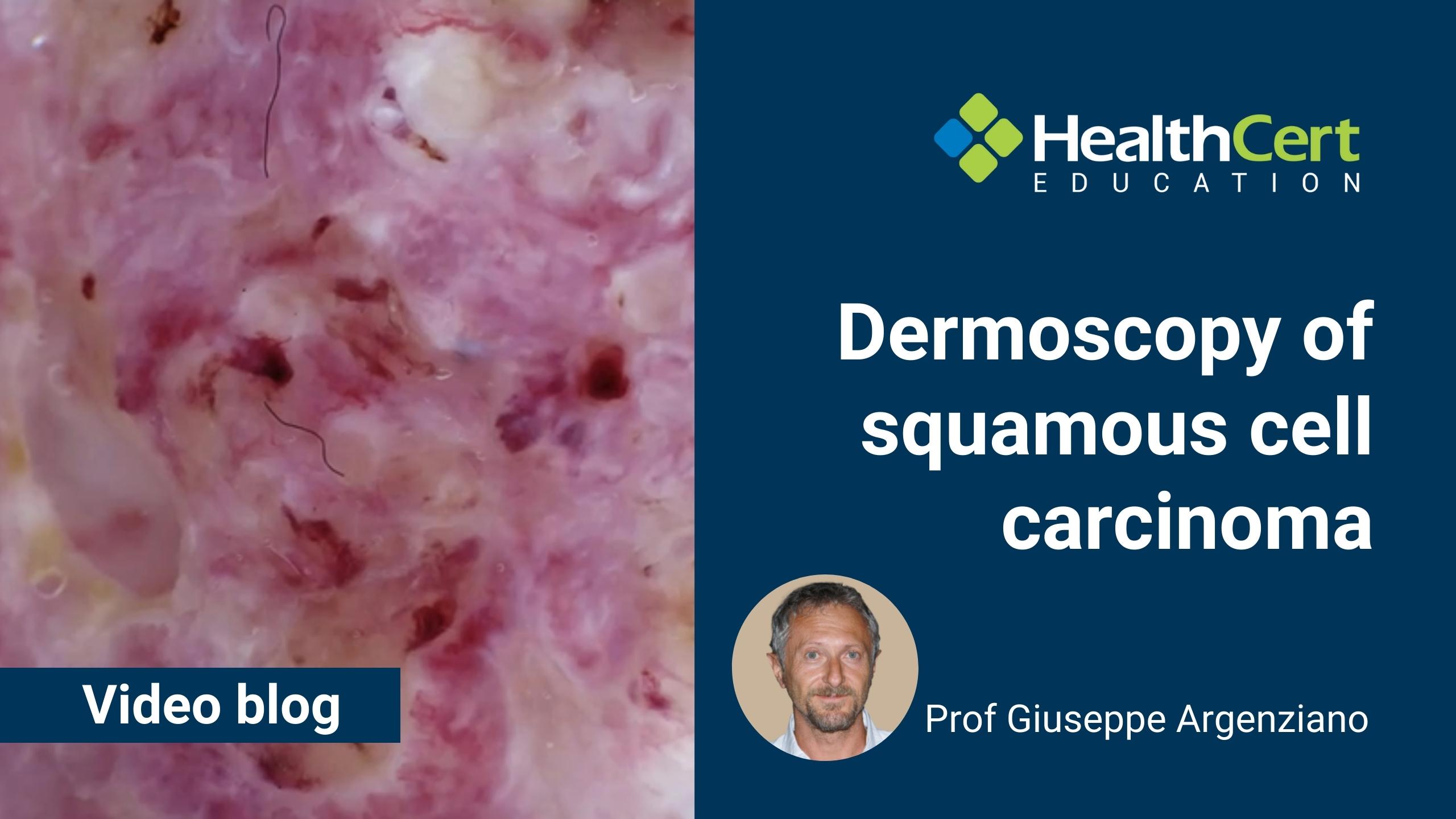How to use PRP therapy in aesthetic medicine
Dr Dianne King talks about how Platelet-Rich Plasma (PRP) therapy can address common cosmetic concerns for patients in primary care.

HealthCert Education
What is Platelet-Rich Plasma (PRP) therapy, and how can it be used as a treatment in aesthetic medicine to benefit your patients? In this short video, Dr Dianne King talks about PRP and how it can be used to address common cosmetic concerns for patients in the primary care setting.
For further information on PRP therapy, learn more about the HealthCert Professional Diploma program in Aesthetic Medicine – online aesthetic medicine training for GPs with optional practical workshops.
Watch the full video now:
In the video, Dr King explains how PRP therapy can be a great adjunct treatment in a doctor's aesthetic medicine toolkit. PRP is an ideal treatment for tightening and smoothing the skin for patients with ageing concerns, with results seen in around two months.
PRP uses the plasma from a patient's own blood. The platelet-rich plasma is isolated from the rest of the blood via centrifugal force, and this plasma is injected back into the patient's skin for its rejuvenative benefits. As the procedure uses the patient's own blood, adverse reactions and other risks are minimised.
''It's important to understand the process in harnessing the body's own healing potential,'' says Dr King.
Dr King speaks about the types of patients who are best suited to PRP therapy and when treatments should commence. She explains the benefits of PRP for treating under-eye circles, skin laxity, acne scarring, and more. It is an ideal approach for hard-to-treat areas.
It's important to manage patient expectations with PRP, as it isn't an immediately effective therapy, and patients may need a cycle of treatments and annual maintenance.
Watch all this and much more in the full video above.
For further information on this topic, you may be interested in HealthCert's aesthetic medicine course.

 1800 867 1390
1800 867 1390

